Proceedings of the 10th World Congress
on Civil, Structural, and Environmental Engineering (CSEE 2025)
April 10 - 12, 2025 | Barcelona, Spain
The keynote information for the 10th World Congress on Civil, Structural, and Environmental Engineering (CSEE 2025) is as follows:
Plenary Speakers
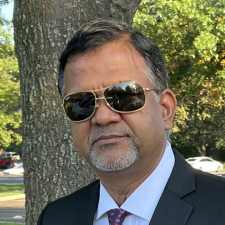
Dr. Anil Agrawal
The City College of New York, USA
ICSECT'25 Plenary Speaker

Dr. Ethel Eljarrat
Institute of Environmental Assessment and Water Research (DAEA-CSIC), Spain
ICEPTP'25 Plenary Speaker
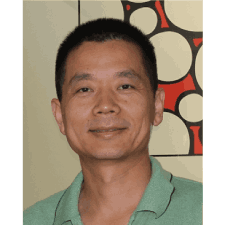
Dr. Jinsong Huang
The University of Newcastle, Australia
ICGRE'25 Plenary Speaker
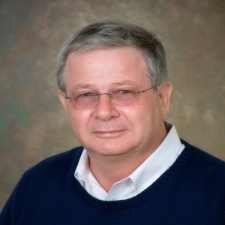
Dr. Dov Leshchinsky
University of Delaware, USA
ICGRE'25 Plenary Speaker
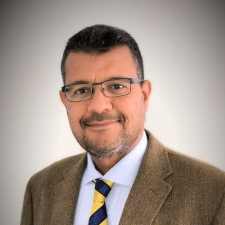
Dr. Mohamed Shahin
Curtin University, Australia
ICGRE'25 Plenary Speaker
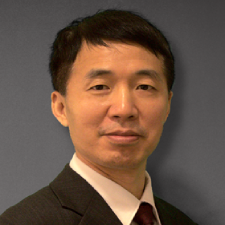
Dr. Xia Yong
Hong Kong Polytechnic University, Hong Kong
ICSECT'25 Plenary Speaker
Keynote Speakers
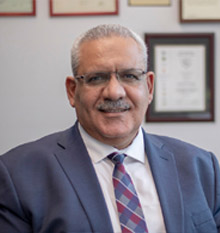
Dr. Khaled Sennah
Toronto Metropolitan University, Canada
ICSECT'25 Keynote Speaker

Dr. Anil Agrawal
The City College of New York, USA
ICSECT Plenary
Dr. Anil Agrawal is a Herbert G. Kayser Professor of Civil Engineering at the City College of New York, distinguished member of ASCE, and past Chief Editor of the ASCE Journal of Bridge Engineering during October 2009 to September 2021. He has been the past chair of the ASCE SEI Committee on Bridge Inspection, Rehabilitation and Monitoring and ASCE SEI Committee on Structural Control and Sensing. He has also been the chair of the Engineering Mechanics committee of Metropolitan Section ASCE since 2013, and is vice-chair of ExCom of the SEI Technical Community Committee. He is recipient of several prestigious awards, including Performance Excellence Award from the City University of New York in 2000, President’s Award for Excellence in Scholarship, Teaching and Service from the City College of New York in 2015, Richard R. Torrens Award for outstanding performance as editor of the Journal of Bridge Engineering from the ASCE in 2019, Arthur M. Wellington Prize for the paper, “Heavy Truck Collision with Bridge Piers: Computational Simulation Study,” Journal of Bridge Engineering, June 2019, from the ASCE in 2020, Metropolitan Section Civil Engineer of the Year Award for character, professional integrity, contribution to academia, and years of outstanding service to ASCE and the civil engineering profession from the Metropolitan Section of ASCE in 2022, and, Ernest E. Howard for “significant contributions in structural engineering for extreme hazard mitigation and blast and impact protection of highway bridges” from the ASCE in 2022, 2022 Research Implementation award for the project “NJDOT UAS/Drone Procedures Manual and Best Practices for Use in New Jersey” by the New Jersey Department of Transportation and 2023 Raymond C. Reese Research Prize for the paper “Performance-Based Design Framework for Concrete Barriers Subjected to Truck Collision,” Journal of Bridge Engineering, August 2021. He has published more than 132 peer reviewed papers, 26 major reports and more than 200 conference papers.
Topic of Plenary:
Man-made Extreme Hazard Effects on Bridges

Dr. Ethel Eljarrat
Institute of Environmental Assessment and Water Research (DAEA-CSIC), Spain
ICEPTP'25 Plenary
With more than 30 years of research, I am currently the Director of the Institute of Environmental Assessment and Water Research (IDAEA) of the CSIC. I am also Head of the group ‘Environmental and Water Chemistry for Human Health’ (ONHEALTH).
I have extensive experience in the development of analytical methods for emerging contaminants, as well as in the assessment of the impact of persistent organic pollutants on the environment and on living beings, including humans. During my PhD, I contributed to the start-up of the first dioxin analysis laboratory in Spain, giving it national and international prestige, and participating as a reference laboratory in the 1999 food crisis following the contamination of animal feed in Belgium. Subsequently, my research in the field of flame retardants has contributed to the generation of scientific evidence for the inclusion of compounds such as PBDEs and HBCD in the list of banned POPs of the Stockholm Convention. Similarly, my line of research on pesticide issues generated pioneering results on the behaviour of the most widely used insecticides, pyrethroids, which were considered ‘ideal’ until our studies showed their accumulation in aquatic and terrestrial organisms, and even in humans.
Part of my current scientific activity focuses on the chemical impact of plastic pollution. I have developed an analytical methodology capable of determining a wide variety of plasticizers, and I have carried out the first studies showing the presence and accumulation of these pollutants in different marine organisms, including fish for human consumption. We have also studied human exposure to these plasticizers through inhalation, with studies on indoor air samples, as well as through ingestion, with analyses on beverage and food samples. Following the COVID-19 pandemic, I initiated a new research line, pioneered worldwide, to assess the environmental and human health risks from the use of face masks. The results obtained led to the achievement of different research projects and contracts with companies with the aim of using less contaminated materials in the manufacture of face masks and other commercial products, and thus controlling environmental contamination from the process of manufacturing materials.
Topic of Keynote:
The Problem of Toxic Pollutants in the Circular Economy

Dr. Jinsong Huang
The University of Newcastle, Australia
ICGRE'25 Plenary
Jinsong Huang is a professor at the Discipline of Civil, Surveying and Environmental Engineering, the University of Newcastle. His research interests include risk assessment in geotechnical engineering and computational geomechanics. He has published over 200 journal papers on the risk assessment of slope stability and landslides, the modelling of spatial variability, stress integration techniques for elastoplastic models, the contact dynamics of granular media, the analysis of hydraulic fracturing and the predictive maintenance of railway tracks. He has an H-index of 50 in Scopus attracting over 1800 citations per year. His contributions in risk assessment, particularly in slope stability and landslides, has earned him the prestigious title of ‘Field Leader’ in Environmental & Geological Engineering by The Australian’s Research 2020 magazine. He received a Regional Contribution Award from the International Association of Computer Methods and Advances in Geomechanics at its international conference in Kyoto in 2014 and the GEOSNet Award from the Geotechnical Safety Network in 2017. He is an editorial board member for Georisk, Geodata and AI, Canadian Geotechnical Journal and Computers and Geotechnics. He is a committee member on the ASCE Geo‐Institute’s Technical Committee on Risk Assessment and Management (RAM) and the ISSMGE Technical Committee (TC304) on Engineering Practice of Risk Assessment & Management. He is the chair of the Executive Board of the Geotechnical Safety Network. He served as the conference chair of the 8th International Symposium on Geotechnical Safety and Risk held at the University of Newcastle in December 2022.
Topic of Keynote:
Slope Stability Analyses: From Factor of Safety to Quantitative Risk Assessment

Dr. Dov Leshchinsky
University of Delaware, USA
ICGRE'25 Plenary
Professor Dov Leshchinsky has retired from the University of Delaware after 32 years of service. Prior to joining the faculty in Delaware, he worked as a geotechnical engineer with the Association of American Railroads in Chicago. At the University of Delaware, he had conducted research on slope stability, soil reinforcing, geosynthetics and dredged materials. The National Science Foundation, US Army Corps of Engineers, Federal Highway Administration and private industries have sponsored various research projects he had conducted. Much of his work has focused on comprehensive design methods for geosynthetic reinforced steep slopes and walls as well as geotextile tubes. He has published numerous referred papers in leading geotechnical journals. He has co-developed well-known design-oriented computer programs partially sponsored by FHWA and USCOE: FoSSA, ReSSA, MSEW, ReSlope, GeoCoPS. These design tools are being used worldwide.
Topic of Plenary:
Limit-State Design Framework for Geosynthetic Reinforced Structures

Dr. Mohamed Shahin
Curtin University, Australia
ICGRE'25 Plenary
Professor Mohamed Shahin is the Geomechanics and Pavements Lead at Curtin University, Australia. He received his BSc and MSc from Cairo University (Egypt) and his PhD from the University of Adelaide (Australia). He has over 25 years of academic and industrial experience with research interests spanning Computational Geomechanics, Ground Improvement and Railway Track Geo-technology. Professor Shahin currently serves as Editor and Associate Editor for a few international Journals and Board Member of several international societies. He is also an Elected Fellow Member of the American Society of Civil Engineers and Engineers Australia. Professor Shahin is listed in the top 1% of Highly Cited Researchers in Engineering by Web of Science, the top 2% of World Scientists by Stanford University Ranking, the top 0.5% of the Worldwide Scholars by ScholarGPS and Oceania’s top 100 Civil Engineering Scientists by AD Scientific Index. He received several international prestigious research awards, including the International Association of Advanced Materials (IAAM) Scientist Medal, Sweden (2023), Fredlund Most Highly Cited Paper Award, Canadian Science Publishing (2018), Editor’s Choice Paper Award, Canadian Geotechnical Journal (2016) and R. M. Quigley Best Paper Award, Canadian Geotechnical Society (2013).
Topic of Keynote:
Innovative Ground Improvement for Civil Infrastructure Development

Dr. Xia Yong
Hong Kong Polytechnic University, Hong Kong
ICSECT'25 Plenary
Dr. Yong Xia is now a Professor at the Department of Civil and Environmental Engineering and Director of the Guangdong-Hong Kong Joint Laboratory for Marine Infrastructure. He obtained his PhD degree from Nanyang Technological University, Singapore and joined The Hong Kong Polytechnic University in 2006. Prof. Xia has conducted health monitoring of large-scale civil infrastructure for over 20 years. He has led and participated in the health monitoring of the world’s longest Hong Kong-Zhuhai-Macao bridge, Tsing Ma Bridge, Stonecutters Bridge, 600 m tall Canton Tower, and the 632 m tall Shanghai Tower. Dr. Xia has co-authored three research books, more than 20 standards in structural health monitoring, and over 180 refereed international journal papers. He secured over 50 research grants as the principal investigator, totalling over HK$80 million. Dr. Xia has won numerous national and international awards, including the State Technological Innovation Award, the Chang Jiang Scholar, the HKIE Structural Excellence Award, the PolyU President’s Award, and ASCE Greater China Award.
Topic of Keynote:
Development of Long-span Bridge Health Monitoring in Hong Kong

Dr. Khaled Sennah
Toronto Metropolitan University, Canada
ICSECT'25 Keynote
Dr. Khaled Sennah is a Professor of Structural Engineering at the Civil Engineering Department at Toronto Metropolitan University, Toronto, Canada. Dr. Sennah’s areas of expertise include the design, evaluation, and rehabilitation of bridges and the structural behavior of structural components made of steel, concrete, and timber for building applications, on which he has more than 290 publications and has supervised over 100 graduate students. He has demonstrated numerous evidences of impact and contribution to the economic design and sustainable construction that have led to field applications and standards. Dr. Sennah’s research achievements have been recognized by international awards such as the 1999 Arthur Wellington Prize for best journal paper in transportation-related infrastructure and the 2002 State-of-the-Art in Civil Engineering award for best journal paper, both from the American Society for Civil Engineers, ASCE. Also, he received the 1998 and 2020 P.L. Pratley Award for best paper in bridge engineering and the 2013 A.B. Sanderson Award for “Outstanding Contributions by a Civil Engineer to the Development and Practice of Structural Engineering in Canada,” all from the Canadian Society for Civil Engineering. In recognition of his long-term achievements, he was elected Fellow of the Canadian Society for Civil Engineering (CSCE) in 2011, Fellow of the Engineering Institute of Canada (EIC) in 2016, and Fellow of the Canadian Academy of Engineering (CAE) in 2017. Sennah was elected Fellow of the International Association of Advanced Materials (FIAAM), recognizing his contribution to “Innovative Solutions in Structural Design and Construction.” He is a member of three Canadian Standard Association’s Technical Subcommittees for developing the 2025 Canadian Highway Bridge Design Code, chair of the FRP group, member of the Material Specific Design Provisions Working Group, and member of the Structures and Analysis Working Group for the development of the 2023 CSA Standard S7 Pedestrian, Cycling and Multiuse Bridge Design Guideline. Also, he is a member of the A253 technical committee (TC) of CSA-S37 Standard: Antennas, Towers, And Antenna-Supporting Structures. Moreover, he is a member of five American Concrete Institute (ACI) committees. Dr. Sennah has a long history of significant contributions to the Canadian Society for Civil Engineering (CSCE) through committee membership, membership, and chairing of scientific committees of conferences, Chairing International conferences, and chairing CSCE Structures Division and others. He is an Associate Editor for the Canadian Journal for Civil Engineering and an Editorial Board member of the ASCE Journal of Composites for Construction. Also, he is the Vice President of the International Association of Jointless Bridges.
Topic of Keynote:
Innovative Fabricated Steel Beams with Cold-Formed Steel: Pioneering Cost-Effective and Sustainable Building Solutions